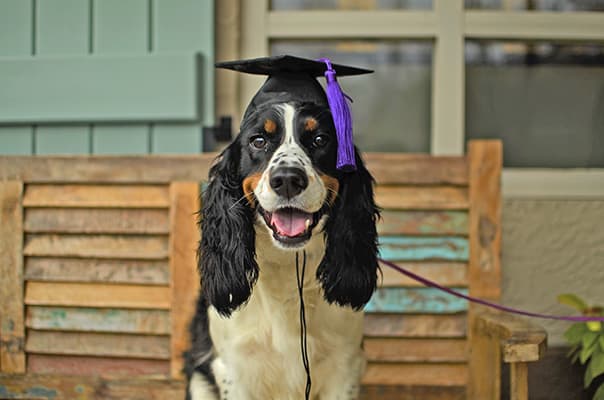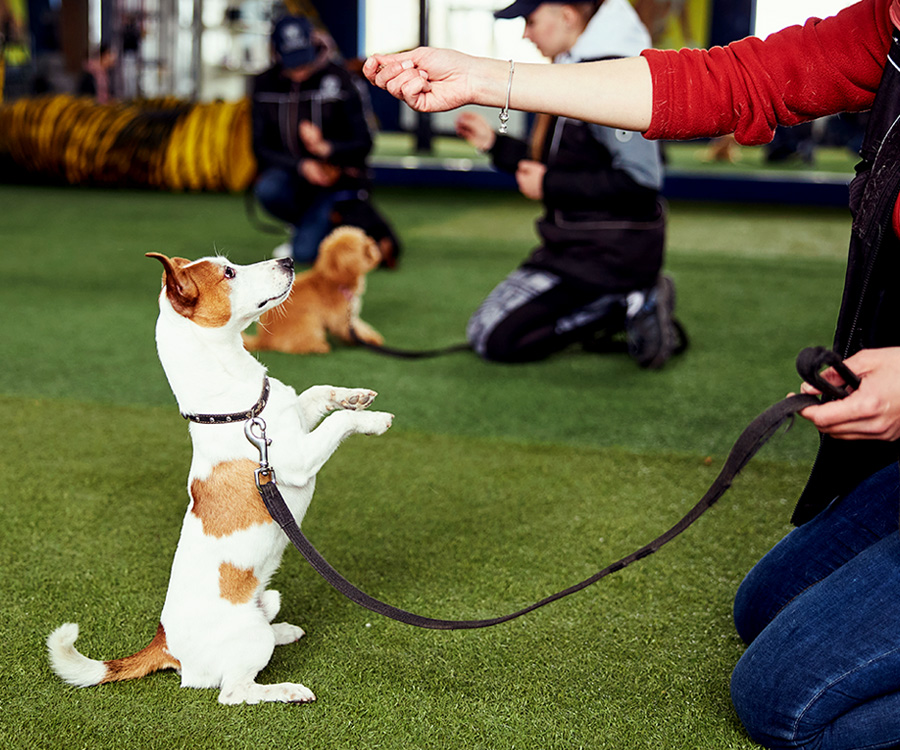Common Mistakes to Avoid During Dog Training for Better Results
Common Mistakes to Avoid During Dog Training for Better Results
Blog Article
Beginner's Overview to Effective Canine Training at Home
Efficiently educating a canine at home needs a nuanced understanding of canine behavior and efficient communication approaches. Establishing clear training goals, utilizing premium incentives, and maintaining consistency throughout family participants are crucial aspects. Integrating training into everyday routines can improve both interaction and retention.
Understanding Canine Behavior
Comprehending pet dog habits is vital for reliable training and cultivating a harmonious relationship in between human beings and their canine buddies. Pet dogs interact mainly via body movement, articulations, and faces, making it essential for proprietors to analyze these signals precisely. Recognizing actions such as tail wagging, roaring, or cowering can give understandings into a canine's emotion and intentions.

Usual behavioral problems, such as aggressiveness, stress and anxiety, or extreme barking, typically originate from misunderstandings or unmet requirements. Observing and addressing these problems immediately can prevent acceleration and guarantee a positive training experience. By cultivating a deep understanding of dog habits, proprietors can tailor their training methods to fit their canine friends, eventually bring about a well-behaved and happy animal.
Necessary Educating Devices
A well-equipped training space can significantly enhance the performance of canine training in your home. Necessary training devices make certain that both the pet dog and the fitness instructor can engage in efficient sessions that promote discovering and bonding.

Spending in a durable leash and a comfortable, well-fitting collar or harness is vital for security and control. These tools aid develop limits and make sure the pet dog continues to be safe and secure throughout training. Additionally, a marked training area, devoid of distractions, help focus for both the pet dog and the trainer.
Training help such as training pads, cones, or agility devices can also improve the experience by introducing range and difficulties. Last but not least, having a notebook or electronic app for tracking development can be important, permitting you to note successes and areas for renovation. Using these essential tools will develop a positive training atmosphere and lay the structure for effective knowing.
Producing an Educating Regimen
Establishing a constant training regimen is crucial for effective canine training in the house. A well-structured regular not only assists in enhancing wanted behaviors but likewise supplies your pet with a complacency and predictability. To develop an effective training regular, start by recognizing details training goals, such as basic commands, leash walking, or house-training.
Pick a marked time each day for training sessions, preferably when your dog is receptive and sharp. Procedure needs to be brief, about 5 to 15 mins, to preserve emphasis and prevent tiredness. Uniformity in timing and environment will improve your pet's knowing experience.
Integrate training into day-to-day activities to reinforce abilities. Technique commands during strolls or nourishment, which incorporates discovering right into all-natural regimens. In addition, remain versatile and readjust the routine as needed, suiting your canine's power levels and mood.
Positive Support Techniques
Favorable reinforcement techniques are fundamental to reliable canine training, promoting desired behaviors via rewards instead than punishment. This method uses positive Get More Info stimulations, such as deals with, praise, or play, to urge pets to duplicate details activities. The keystone of this strategy is timing; incentives ought to be provided right away complying with the preferred habits to create a clear organization.
When executing favorable reinforcement, it is necessary to select incentives that are inspiring for your dog. High-value deals with, such as little pieces of hen or cheese, can be especially effective throughout training sessions. In addition, differing the incentives can keep your canine's rate of interest and enthusiasm.
Begin with simple commands, like "sit" or "stay," and progressively progress to extra complicated tasks. Uniformity is essential; ensure that all family members utilize the same commands and incentive systems to prevent confusion.
Furthermore, it is essential to stay patient and prevent irritation. Pets, check my blog like people, discover at their own rate. By cultivating an encouraging training atmosphere with favorable support, you can improve your pet dog's knowing experience while reinforcing the bond in between you and your hairy friend, preparing for effective training outcomes.
Usual Educating Difficulties
While training a canine at home can be a fulfilling experience, it often features a collection of typical obstacles that can check both perseverance and consistency. One common issue is disturbance. Pet dogs may end up being conveniently averted by noises, motions, or perhaps scents in their setting, making it tough to preserve their emphasis during training sessions.
An additional challenge is inconsistency in commands and support. It can impede and confuse the canine progression if household members make use of different signs or incentives. Establishing a unified approach is essential for reliable interaction.
In addition, pets can experience disappointment or anxiety, especially if they do not recognize what is expected of them. This can cause unwanted behaviors, such as eating or barking.
Ultimately, the timing of reinforcement is crucial (Dog training). Delayed rewards can lessen the effectiveness of positive reinforcement, as canines may fail to connect the actions with the benefit
Getting over these difficulties needs dedication, clear communication, and a structured training strategy. Acknowledging and attending to these common barriers will certainly lead the way for a much more effective and delightful training experience in your home.
Final Thought
In conclusion, effective dog training at home requires a detailed understanding of canine actions and effective communication strategies. By developing clear click for more info training goals and making use of top quality treats together with positive reinforcement, the training process ends up being much more gratifying for both the dog and the instructor.
Developing a consistent training routine is vital for reliable pet dog training at home.Positive reinforcement strategies are essential to efficient canine training, promoting desired habits via rewards instead than penalty (Dog training). By promoting a helpful training atmosphere through positive reinforcement, you can enhance your canine's discovering experience while strengthening the bond in between you and your hairy buddy, laying the groundwork for successful training outcomes
In conclusion, successful pet training at home requires a detailed understanding of canine habits and effective interaction approaches. By establishing clear training goals and using premium treats alongside positive reinforcement, the training procedure comes to be more rewarding for both the trainer and the pet dog.
Report this page